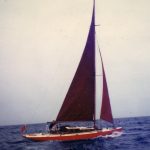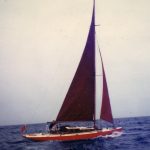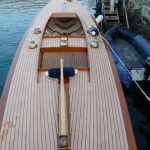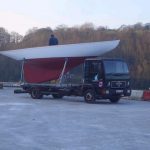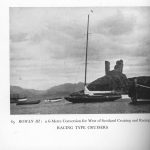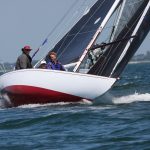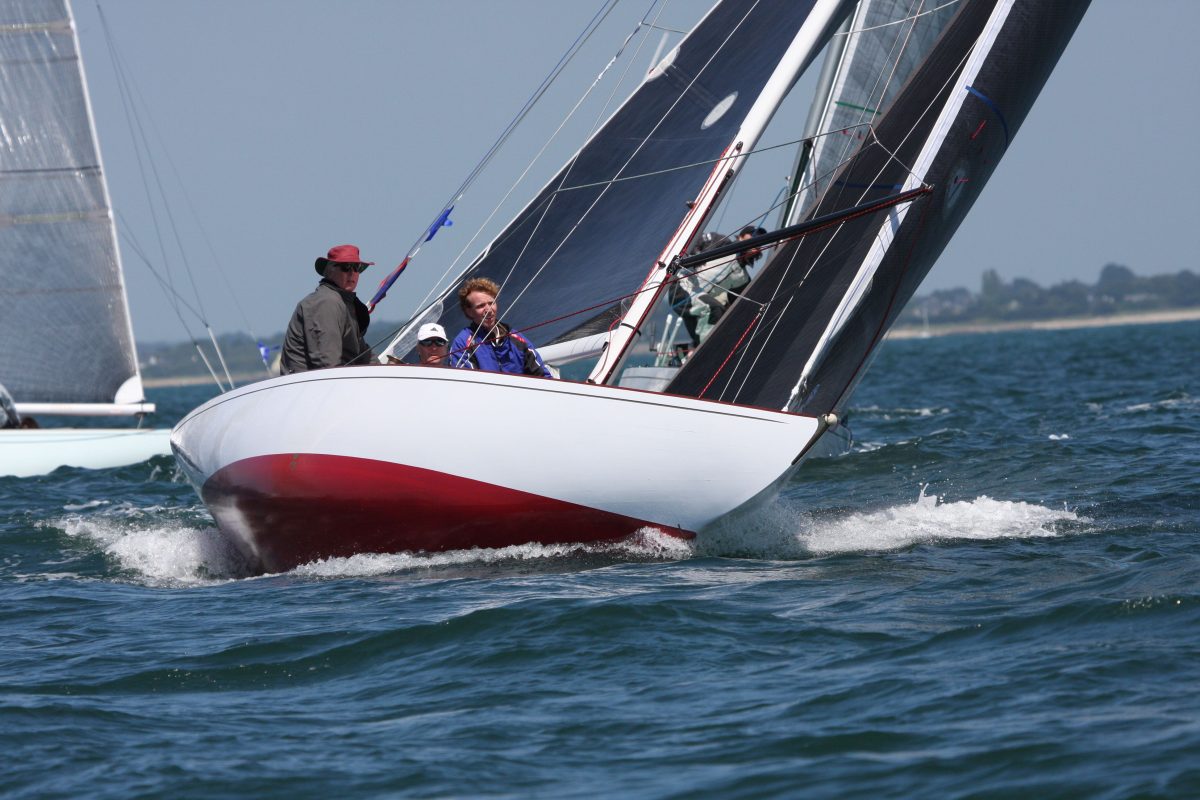
| Status schip | Toegelaten |
| Naam schip | Valdai |
| VKSJ nummer | V1072 |
| Varend erfgoed | Ja |
| Type schip | International 6 meter |
| Bouwwijze | karveel |
| Ontwerper | Alfred Myne |
| Ontwerp jaar | 1930 |
| Bouwer/werf | Bute Slip Dock Company, Port Bannatyne Schotland |
| Bouwjaar | 1930 |
| Romp vorm | s-spant |
| Maximum diepgang | 1.60 m. |
| Breedte op de huid | 2.10m m. |
| Toelatingsrapport | Download Valdai |
| documenten | |
| Materiaal romp | hout |
| Materiaal opbouw | hout |
| Motor | geen |
| Waterverplaatsing | 3795 |
| Waarvan ballast | 2800.00 |
| Ballastmateriaal | lood |
| Kooktoestel | 1 |
| Thuishaven | Fowey |
| Geschiedenis | De Valdai is een zesmeterklasse van de ‘2nd rule’; ontworpen door de bekende Schotse ontwerper Alfred Mylne. De geschiedenis en de restauratie zijn prachtig beschreven in het Januari 2012 nummer van Classic Boat. De boot lag bij aanmelding nog in Fowey, Cornwall bij de werf van Tom Owen, die de restauratie voltooid heeft. Interessant in de voorgeschiedenis is dat de boot al vrij snel in de begin jaren dertig werd omgebouwd tot een toerjacht met een lage opbouw, een toegevoegd voorluik en een Stuart Turner benzinemotor. Het boekje ‘Dream Ships’ van Maurice Griffiths laat een indelingsplan zien van een tot toerjacht omgebouwde zesmeter met een dergelijke configuratie: nog steeds totaal geen comfort! Heden ten dage is ze dus weer geheel teruggebracht in haar originele vorm waarbij ze als ‘2nd-rule’-zesmeter toch tot zo’n begin Baufort 4 nog steeds een goed tegenspel kan geven aan de ‘3rd-rule’ boten van deze klasse. Het zijn natuurlijk de zeileigenschappen pur sang waarom je een dergelijke boot zou willen hebben en het zeilen erin is alleen te vergelijken met bijvoorbeeld het rijden in een sportwagen uit de dertiger jaren. In beiden kan je drijfnat worden, het is er hopeloos oncomfortabel en niet geheel van gevaar ontbloot. Ze zijn nergens anders goed voor dan om snel te gaan, maar er zijn maar weinig alternatieven die je een grotere kick geven! Deze beschreven boot voldoet uiteraard aan de oorspronkelijke criteria uit de beginjaren van de VKSJ: lang dun en lekker. Artikel uit Classic Boat: A mere 106 years after the first Six Metre was launched, this famous class continues to enthuse sailors, designers and boatbui lders alike, determined to keep or return these fast and exciting boats to racing condition. Sixes always were the most popular and numerous class within the Metre Rule, and they are seeing a resurgence now. Only a handfu l of the classics remain to be restored, and there is a full schedule of racing at narional and European level, with Six Metre fleets on both coasts of the US and further afield. Valdai was one of a pair of Six Metres designed by Alfred Mylne in 1930 to the Second International Racing Rule – the other was Beausobre, restored recently and sailing on Lac Léman in Switzerland. Beausobre carne to the Solent during the Six Metre Worlds and the Metre Centenary Regatta in 2007 and <lid well in a strong class of 25 boats. Now her sistership Valdai has been restored in Co rnwall by Tom Owen, raising the tantalising prospect of a head-to-head race. Mylne started his career back in the 1890s, working in the design office of the highly respected naval architect GL Watson, known for his scientific approach to yacht design. This was not lost on the young Mylne, and the drawings for Valdai reflect this carefulcalculation. His boats carried massive sail areas, which would have imposed large stresses on huil form, so they were carefully built and reinforced using top quality materials. Mylne and his namesake nephew encouraged contemporary designers and builders to keep standards high to achieve good value for the first owner and subsequent ones – though they would all doubtless have been amazed to see so many of these boats still sailing in the 21st century. PASSED THROUGH MANV HANDS However, Valdai has had a hard life with many owners, unusually little racing and episodes of neglect. One previous owner, seeing her newly restored, was moved to say that she has at long last reached a loving family. “I doubt that she has ever looked as impressive as she does now since the day she was launched.” She was built at the well-known Bute Slip Doek Company in Port Bannatyne on the Isle of Bute, for one Robert Clark of Glasgow, who along with his brothers commissioned a number of Six Metres, all beginning with the letter ‘V.’ He very soon sold her to Or Robert Carslaw of Rhu, Dunbartonshire, who converted her to a cruiser and renamed her Rowan JIJ, basing her on the Clyde at Greenock. He cruised her on the west coast of Scotland with his family, having installed a Stuart Turner engine and a forward batch. She changed hands several times after the war, becoming Mameno, then Valdai again when George Andrews of Newcastle took over in the 1950s. He let his teenage son John sail her with two friends, one of whom was Ed Cart ner, who remembers the time fondly. They day-raced the boat under the burgee of the Royal Northumberland Yacht Club. “Valdai was fast and wet, sailing through short seas rather than over them,” Ed said. “During one race, we had a fairly heavy collision with another Six Metre, Rozelle, that took a chunk out of our forefoot and resulted in a minor start of a seam at the stem. She seemed to suffer a slight but persistent leak after that. Needless to say, guard rails, lifejacke ts, flares, VHF and other ‘sofry’ equipment was unknown, but we did carry a Fairey Duckling dinghy on long trips. “Once John and I had shown we could handle Valdai, Mr Andrews allowed us to take the boat away during the long summer holidays from school. We would be at sea for up to three weeks at a time and usually headed north to visit havens and harbours of the Scottish southeast and the Firth of Forth. Occasionally we would be invited to join a local club race. Things were primitive, but perfectly adequate for adventu rous teenage lads.” Ed’s sister bought Valdai in the late 1960s and sailed her out of Sunderland until 1972, when she was bought by three new owners, Martin Royle, Philip Robino and Tom Sillwen and based in West Mersea, Essex. She was next identified in 1995, lying neglected on her side on the saltings of the River Deben in Suffolk. A man who hoped to buy her dealt with the Harwich Harbourmaster and the Receiver of Wrecks, who finally tracked down two alleged owners. They rook the matter to court, and eventually she appeared for sale on eBay and was bought by Peter Wilson of Aldeburgh Boatyard, who began the process of saving her. CAREFUL RESTORATION But it was boatbuilder Tom Owen who was to finish the job, and fort unate ly for Valdai, he had trained at the Internatio nal Yacht Resto ration School in Newport, Rhode lsland. His interest in Tumlare n and in Scandinavian designers must have led fairly easily to an interest in Metre boats, and Six Metre expert Tim Street guided him towards Valdai. The deal clone, Tom had the boat transported to his yard in Fowey, where he realised she was badly out of shape and hogged, exacer bated by the loss of her deck. He had to redraw Valdai’s lines and bring her back to the original shape, helped by the detailed plans left by Mylne, now part of the Mylne & Co archives owned by David Gray. Tom lofted the original plans, building and installing a full set of moulds. Then the entire boat was retimbered and refloored with some good French oak sourced by John Moody in Modbury. lt certainly helped that Tom works with designer Ian Howlett, ex-chairman of the International Six Metre Association’s technica! committee. He had also worked with Andy Postle of Allspars rigging, who owns the classic Six Metre Titia, and Rees Martin, for many years Secretary of the British Inte rnat ional Six Metre Association, and owner of a modern Six and a Tumlare. About two-thirds of Valdai’s mahog a ny planking above the waterline was saved, being of good quaLiry and perhaps partly protected by the mud in her Deben berth. She also has her original mahogany backbone and transom, her lead keel and rudder. But there was plenty of wet plywood and glassfibre to remove from poor repairs over the years. Tom removed the 2½-tonne keel in order to replace the keelbolts with new bronze ones, and replanked the boat below the waterline with African mahogany. Tristan Scone in Salcombe found some Sitka spruce through his father in British Columbia to replace the beamshelf and the deck beams, along with some 40ft (12. 2 m) lengths of Douglas fir to plank the decks. John Moody also provided some beautiful Honduras mahogany for the covering boards and kingplank, coamings an d trim – a wood not easy to find these days. Valdai’s mast needed to be repositioned and keel-stepped, an owner in the 1970s having reverted toa deck stepped mast to save money at the time. To strengthen the boat internally, Tom installed four ring frames, as per the class rules: two in way of the mast, one at the mainsheet track location and the final one where the runners are located. The two at the mast are rigged to take the full load through the shrouds, which come straight through the deck onto a metal tube. This tube is suppo rted by the ring frames, and has an additional rigging wire and bottlescrew down to a metal plate that sits beneath the mast step. The runner turning cheek blocks are mounted on a substantial box construction, which is bonded to the aft ring frame and bolted to the keelson, helping to spread the significa nt loads. And the forestay is mounted on a Barrels underdeckfurler in bronze finish to match the beautiful Meissner bronze winches from Holmacro. Tom had found three owners for Valdai who were able to be involv ed in th e resto ratio n process – Sir Robert Owen, his friend James Fairrie, and a Dutch colleague of his, Dirk Stolp. She was finished just in time to sail over from Fowey with a borrowed set of sails to the British Champio nships taking place at Mylor Yacht During the next few days, winds were lively,to say the least. It was a brave step to enter a fiercely contested championship with an untried boat, but it proved a good one. From that experience they were able to go on to the European Championships at Nynäshamn in Sweden, where they performed better still. There will be more ‘bests’ to come as Valdai’s crew gers to know her, and meanwh ile she is winning the beauty stakes everywhere. People stop to gaze, to admire her lines, her uncluttered and elegant deck layout. Her white aluminium mast looks good, but Torn is determined to build a competitive wooden spar for her further down the line, to show that it is possible. Valdai will be much enjoyed. She’s balanced both upwind and down, quickest in up to 12 knots of wind and able to catch the newer Third Rule boats, though after that, her lighter frame begins to teil against her. Like all Sixes, she’s a wet ride , but that’s part of the fun. Meanwhile Tom has bought another exciting Six to restore: the 1947 David Boyd design Marletta, built to the Third Rule to race in the Olyrnpics. She’ll be subtly different, and a great temptation for anyone considering racing with Sixes. It’s clear that Tom won’t rest on his laurels for long, it’s straight in to the next project. |

